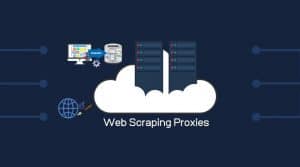What is the difference between the Go and python programming languages? in the article below, we highlight the key similarities and differences between the known languages to help you make an informed decision.
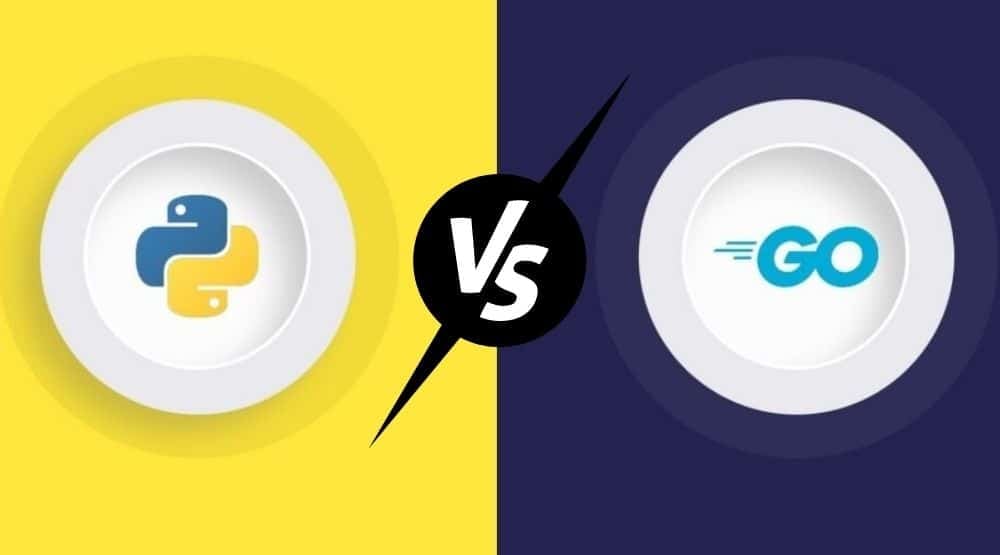
TL;DR – Comparing Go and Python: A Look at Their Similarities and Differences
| Feature | Go | Python |
|---|---|---|
| Structure | Procedural | Object-Oriented |
| Performance | Faster execution compared to Python | Slower execution compared to Go |
| User Community | Systems administrators, security professionals, etc. | Developers and programmers |
| Speed of Development | Faster for small-scale projects | Slower for small-scale projects but faster for larger projects with community codebases |
| Ease of Use | Niche and narrow language, easier to learn | General-purpose language, versatile but has a steeper learning curve |
| Readability | Highly readable | Highly readable |
| User-friendliness | Beginner-friendly | Beginner-friendly |
| Adoption | Growing rapidly | Growing rapidly, with a larger user base |
| Career | Average salary $135,000 | Average salary $119,879 |
Note: This comparison is based on the commonly held perceptions and general trends, and may not be applicable in all cases. The actual experiences may vary based on individual use cases, projects, and specific requirements.
In recent times, many development teams have gone through a series of meetings to decide which programming language is best for whatever project they may be embarking on. As such, developers are constantly looking for new languages to get better results. However, there are numerous good programming languages available that help build all kinds of infrastructure. Some of these languages include PHP, C++, R, Python, JavaScript, and Golang.
Developers are frequently torn between Golang and Python among these coding languages. This is because Golang and Python are both general-purpose programming languages used for many tasks. Since they are both popular and easy to use, they are often compared. Today, Golang and Python are two widely used programming languages.
Nevertheless, Python and Go are different. They both generally serve different purposes.In this article, we will examine the similarities between these two programming languages and, most importantly, compare them based on certain parameters. But before then, let's first understand what these programming languages are.
What is Golang?

Google developed the open-source programming language Go in 2007. It is commonly known as Golang. It was made public in March 2012 after becoming open source in 2009 following its development in 2017. Robert Griesemer, Rob Pike, and Ken Thompson, three Google developers, created Golang.
The objective was to create a language that is readable, fast, functional, and simple to learn. As a result of its usability, the language soon gained popularity among developers. Some engineers and programmers also describe the programming language as a breath of fresh air in the coding profession.
At its core, Golang is a compiled, statically typed programming language that supports concurrent programming – meaning it allows the running of multiple processes simultaneously. However, statically typed programs with Golang won’t start up until errors have been fixed, unlike dynamically typed languages like JavaScript and Python. However, Go has become one of the most popular programming languages in recent years.
What is Python?

Developed by Guido van Rossum in the 1980s, Python is an interpreted, object-oriented, high-level programming language with dynamic semantics. This open-source and general-purpose programming language is dynamically typed. As an interpreted language, Python supports several programming paradigms, such as object-oriented programming (OOP), procedural programming, and functional programming.
Its simple, easy-to-learn syntax places emphasis on readability. It uses keywords frequently in English, whereas other languages use punctuation. As such, it has fewer syntactical constructions than some other languages.
Additionally, Python offers a high-level built-in data structure. Its data structures, along with dynamic typing and dynamic binding, make the language perfect for rapid application development.
Despite its age, Python is still a well-liked general-purpose programming language with a wide range of uses. It has overtaken other languages as the most popular one in the world thanks to its versatility. Since its release, it has been incredibly well-known, and its user base has expanded.
Similarities between Golang and Python
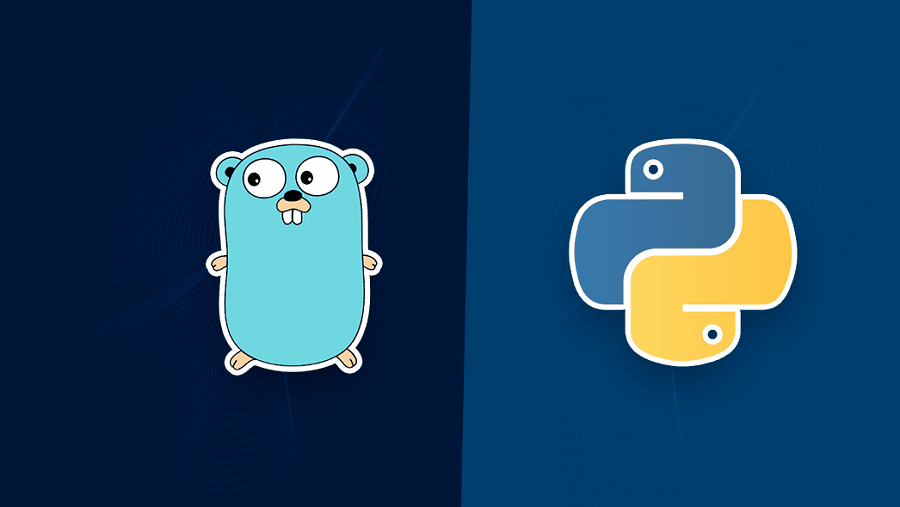
As widely used programming languages, Golang and Python share some characteristics. Both programming languages are high-level and open-source. However, they are both easy to learn, and their codes are really simple to read. Both of these languages have extensive standard libraries and support procedural programming.
As regards portability, these two programming languages have portability support, which implies that you can write a Go or Python program on one machine and execute it on another machine without any errors.
Additionally, Python and Go happen to be supported by strong community development channels on GitHub. You can also find blogs like RealPython with tons of useful tutorials for Python. For Golang, Go Blog is one blog site that is supported by the Go creators with useful articles.
Comparison Between Go and Python
Both Go and Python are modern, high-level programming languages that are interpreted and support multiple programming paradigms. However, Python is known for its excellent readability and ease of use, while Go is growing in popularity and is known for its performance.
| Feature | Go | Python |
|---|---|---|
| Type | Static | Dynamic |
| Interpreted | Yes | Yes |
| High-level language | Yes | Yes |
| Multiple programming paradigms | Yes | Yes |
| Readability | Good | Excellent |
| Ease of use | Good | Excellent |
| Community size | Growing | Large |

There are often debating grounds on the differences between the Go programming language and python, even though python is an old name in the programming world. While this is going on, their similarities are very thin.
Still, the fast-growing nature and acceptance of Go pull in an outburst of curiosity for many tech-savvy and other beginners wanting to learn programming to level comparison. In this article section, we will dig out and explain some primary distinct parameters that differ in both.
-
Paradigms
Paradigms in this concept get down on the overall makeup of both programming languages. Before now, programming is seen to not have a friendly interface as the complexity in Java, C, and C++ needs deeper creativity to create any code. The building of python draws the now-named programmers into learning and becoming professionals. However, the advent of Go by Google brings about the comparison. Go, and Python are now the two most trending programming languages among others, but what seldom pops up is which is better and preferred.
Go, and Python are considered to be diverse in functionalities, but practically, Golang is more specific than python. While python is an all-purpose language, the major strength of Go is its concurrency. Go paradigms are procedural and functional, while python is object-oriented, imperative, functional, and procedural. i.e., python revolves around four paradigms, and it’s scripted with syntax to transcribe words to code. If you are into web writing, data science, or machine learning, python is best. Developing a system base application on windows architecture, Golang should be your pick.
-
Concurrency
Concurrency, as we stated above, is the biggest strength of Go. Both of the programming languages are multithreaded but on different scales. Go has an inbuilt system for concurrency, and contrary to that, python works in parallel. What this means is that using Go, an application can run a simultaneous task; it doesn’t wait for one task to finish before engaging in another one. Python doesn’t have such inbuilt concurrency, so it works with parallelism, i.e., an application breaks its activities into threads and runs on several CPUs. In Go, a CPU can be used, and others will run in the background.
This parameter is why Go is more scalable because running multiple tasks on a goal can aid in achieving the bigger task in lesser time. Another thing to mention is that since Google develops Go, it caters to and scale up all task that deals with the search engine giants.
-
Performance

Talking about performance in terms of the comparison between GO and Python, the obvious is usually stated, not because there is another side to it, but because the answer is straightforward. Go is faster in speed and execute task quicker than python. So as a programmer, if you look for speed and performance, Go takes the lead here; its performance is like C++ or Java.
Also, since the uniqueness of Go lies in its concurrency, the speed in getting tasks done swiftly can’t be overlooked. And compared to python by performance test result, the Mandelbrot test in Go is 48 times faster than that in python, Spectral-Norm 43 times faster, and the N-Body test 38 times. Thus Go is 40 times faster in performance than python.
On the other hand, python is all-purpose, but it takes time when it comes to runtime and compilation. A work that can take seconds to run by Golang will take minutes on python. Hence, python is sluggish. Note that these two languages are well used, so your use case should define your choice as they differ in functionalities with only two or three major similarities to liken them.
-
Readability
Although both python and Go are beginners friendly and easy to learn, readability is not the same. In every programming world, teamwork is the main target and goal because just an individual is not a highland of knowledge.
Therefore, multiple programmers or developers work hand in hand. Meaning that readability matters a lot as it shows the core simplicity and clarity of the codes.
In these concepts, both work well, but python should be highly considered because it has different ways of writing codes, and understanding them gives you an upper hand. Also, if you don’t know a particular coding method, you can adapt to another. Make sure not to abuse this privilege so you don’t get confused.
Golang, in contrast, has stringent coding rules. Although it does not harbor unimportant details, it has a specific way of writing code. It denies access to whatever is not valuable to the current task. The major turn-off in Go is that syntax is not for fresh learners.
In addition, syntax, semantics, and variables are top priorities in programming to mention a few, and any wrong input in syntax and variables will lead to wrong coding semantics. Python programmers can easily understand Go without too much of a hassle. Even if there are many ways to write code in python, the results are very simple and readable.
Let’s write a code to sum up, 2+3 using python and Go language.
Golang
package main
import ("fmt")
func main(){
var x int = 2
var y int = 3
fmt . PrintIn(x+y)
}
output 5
Python
x = 2
y = 3
print(x+y)
output 5
Now, that’s a clear example of why python is more readable than Go.
-
Memory Management
When looking at memory management, unlike other parameters, its conclusion goes on concurrency and performance. Now, how do these two attributes come to play a role here? Go has concurrency, and as stated above, this category gives Go its performance and speedy strength, which leads to lesser memory usage in carrying out tasks.
Memory management is a downside for python as it consumes more space. Work of a hundred memory spaces in Go can eat up thousands of memory spaces or more in python. Aside from that, Go has a Goroutine, which allows it to have hundreds of run times while consuming a few kilobytes of memory. The garbage collector is another plus for Go, even though python has this feature as well; Golang being a categorized C group of programming languages, can collect garbage (unused data) to reduce memory usage and leakage.
-
Developer Productivity
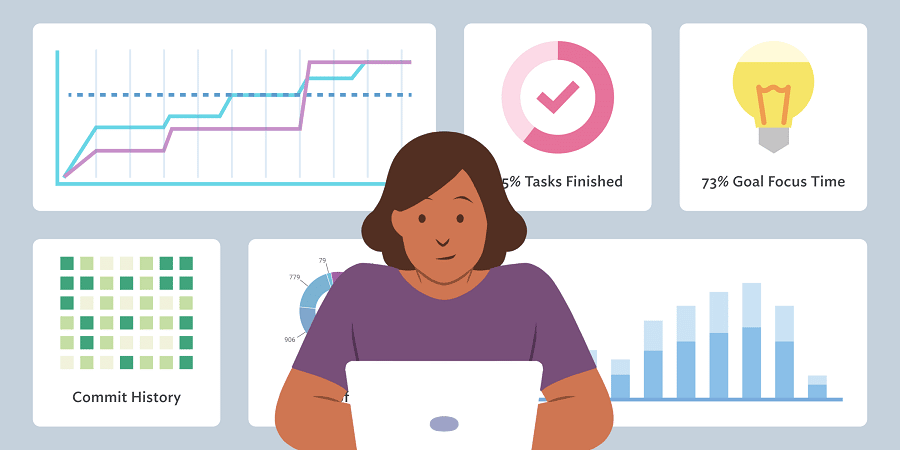
Coding in python requires creativity to see you through excellent productivity. Often you need someone to teach you as a beginner how to go about this. But in Go, there is some task even a dummy can pull through by merely following the Go guide. Meaning that Go does not require developers to be creative; whichever task is to be achieved has a set guideline to be followed to combine the syntax to code correctly.
The only place Go get creative is creating Goroutine. However, to keep activities going smoothly sometimes is a downside for Go, unlike Python, which has a faster library to keep going because of its larger community base. Python has huge popularity for building prototypes.
Additionally, Python can run on any OS, Windows, Unix, or macOS, among others, compared to Go. Above all that, Golang gives more flexibility to developers as they don’t have to do anything tedious or advanced to create a working code; hence it is considered developer friendly than python.
-
Language
The difference between these programming languages is pretty obvious when it comes to language. In comparison, python is a dynamically-typed language, which means detecting bug errors is done during runtime. Since python uses an interpreter that sets scripting interpretation, it may say otherwise, thereby causing fewer tasks to be carried out. Go is a statically-typed language, so bugs are easily spotted and debugged along the line. Also, since Go uses a compiler, variables are clearly shown so any error can be seen.
One thing to mention is the non-generic side of Go. Moreover, several frameworks of python have been built for years, like Numpy for handling complex matrix functions, Tensorflow for machine learning, OpenCV for image process, and Pandas for data analysis, amongst many others. Go is growing quickly but has no such frameworks or libraries as python.
-
Application
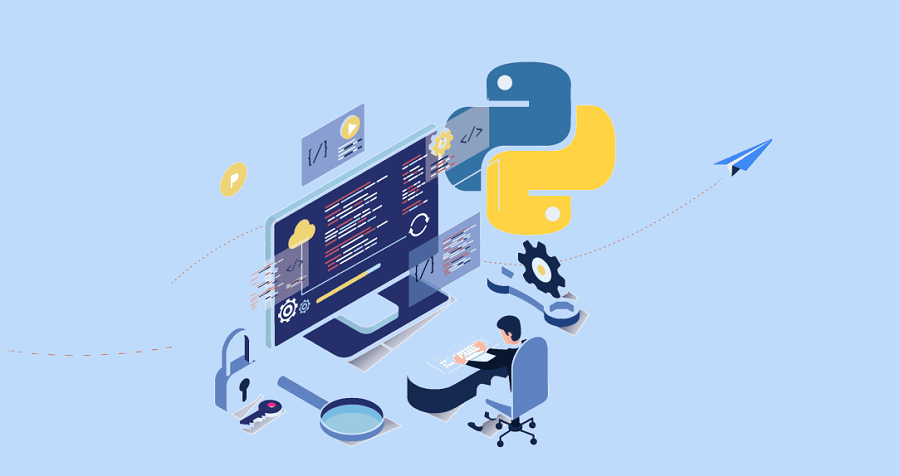
Both programming languages have distinct areas of focus based on their development. The Python language is widely used in fields such as data analytics, artificial intelligence, machine learning, deep learning, and web development. Most of these applications of Python are credited to the variety of libraries available for the dynamically typed language.
These libraries make the use of the language easier. Golang, on the other hand, is mainly targeted at systems programming due to its technical features. Because of its concurrency support, Golang can be used in areas such as cloud computing and cluster computing. Its powerful and user-friendly libraries enable programmers to set up a web server in seconds. This makes the language usable in server-side applications, web development, and DevOps.
-
Exceptions
In comparing the exceptions of the Python and Go programming languages, Python happens to provide exceptions. Hence, errors occur in a Python application when something unexpected goes wrong just like in most programming languages. However, the Python exception class hierarchy consists of a few different exceptions that are spread across the important base class type. In Python, you can handle exceptions with three statements – try, except, and finally. Golang on the other hand doesn’t provide exceptions. It only shows errors after compilation.
-
Community
Between these two programming languages, Python has been around longer than Golang. As a result, the Python community has grown stronger and larger over time. With the Python community, you have a lot of community support, such as third-party libraries, extensions, and tools. The Python programming language's large community translates to easier problem problem-solving and an easier opportunity for businesses to find and hire developers.
In contrast, the Go community is much smaller and the pool of resources is far less developed. Even though Golang was adopted very quickly, the community lacks extended libraries. But interestingly, if run into a problem, there are high chances of someone would’ve already solved it. This will without doubt change in time, but currently, Python has the larger community.
-
Flexibility
You can work with several languages as a programmer because of a programming language's flexibility. This mostly concerns how simple it is to learn and utilize. Even though they are both open-source languages, Python probably has more flexibility than Golang. Go, however, offers some flexibility as well, albeit not to the same extent as Python.
-
Debugging and Bugging
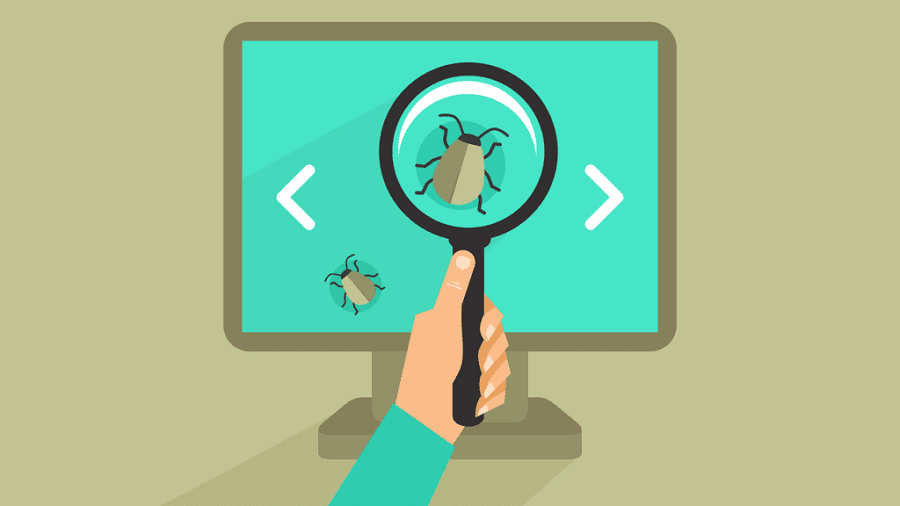
When it comes to bugging and debugging in Go and Python, it all boils down to their ability to handle errors. As a result, Golang's error handling system is not straightforward. In comparison to Go, Python makes handling errors simpler. The intricacy of the process with Go versus Python is the main difference in their error management.
Multi-value returns are used in Go's standard error handling. Don't ignore errors; they are critically important is the guiding principle of error management in Golang. The syntax for the function func f() (value, error) is simple to understand and use. The intentional usage of errors as first-class values in functions is mandated by Golang's error-handling approaches.
Golang and Python Drawbacks
After going over the various comparison parameters for the Python and Go programming languages, let's take a look at the disadvantages of the two.
Drawbacks of Golang
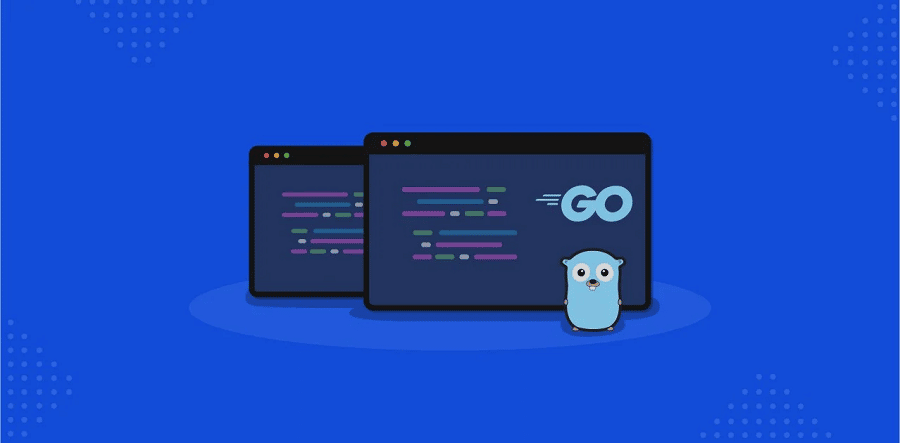
The following are some disadvantages of using the GO language:
- It is not an object-oriented language: In contrast to Python and other programming languages, Golang does not support object-oriented programming.
- It is a relatively new language: While Golang has a growing and vibrant community, it lacks the resources of Python. It is still in its development stage. As such, Golang developers are finding it hard to extract the best out of its libraries.
- It is not a generic language: Unlike Python and a few programming languages, Go lacks generic support.
- It lacks frameworks and has poor libraries: Go programming language does not have major frameworks in contrast to other languages. For instance, Python has Django, JavaScript has React, PHP has Laravel and Ruby has Ruby on Rails. Golang also doesn’t have many libraries. In this regard, Python beats Golang by far with numerous frameworks and libraries.
Other disadvantages of using Golang include poor support for code inheritance, a troublesome error-handling method, no native GUI, and low flexibility due to its static typing nature.
Drawbacks of Python
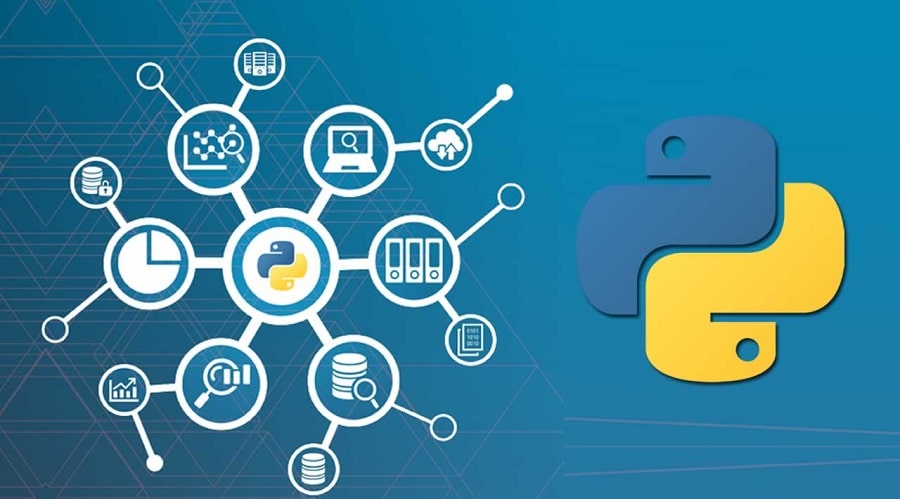
We have looked at some of the drawbacks that may discourage engineers and programmers from using Golang. However, we would also examine a few other disadvantages of python that may put a programmer off.
- It has a slow execution speed: Speed is not Python’s strong point, unlike Golang. Hence, using Python on a project that considers speed is not a wise choice for your project. This slow nature of python can be attributed to its line-by-line execution of code. If speed is what you need, you should look to languages like Golang.
- It does not have memory efficiency: With all of its cool features, Python has low memory efficiency. This is because Python programs are run via an interpreter; as a result, they use more memory than any equivalent program written in a compiled language like Go.
- It shows more errors at run-time: Due to Python’s dynamically typed nature, it creates runtime errors. This happens because the language’s nature allows it to change a variable's data type at any time.
- It is unsuitable for mobile computing: Python is an unsuitable language for developing mobile apps. This is due to its slow processing power and poor memory management. It is more of a server-side programming language, not client-side or mobile applications programming.
Conclusion
Well, with all we have covered in this article, you would agree that Python and Golang are basically simple and easy-to-use programming languages. Both these languages are unique, with their specific features are best to use cases. However, they both have their pros and cons.
For instance, Go is fast, and Python has a lot of community support. At the end of the day, the best option between these two awesome languages is based on your project needs and demand.
Helpful resources
- GitHub – revel/revel: A high productivity, full-stack web framework for the Go language.
- GitHub – labstack/echo: High performance, minimalist Go web framework
- Scalable Feeds & Chat – Powerful APIs and Components by Stream
- Activity Feed API – Scalable activity streams & news feeds as a service!
and Information,
- (To be 100% correct the concept of CSP started in 1977, so this innovation is more of a new approach to an old idea.) (softwareengineeringdaily.com)
- According to StackOverflow, 38% of developers know Java, 19.3% know C++ and only 4.6% know Go. (softwareengineeringdaily.com)
- It's estimated that there are around 8 million Python developers in the world. (hackr.io)According to the same source, Python developers make an average of $119,879 a year with entry-level positions starting at $97,500 a year. (hackr.io)
- When it comes to complex AI computational math programs, Go performs 20-50% better than Python. (bacancytechnology.com)
- e learning Python than ever (3% increase from the previous year), with the language being the first one that new programmers choose to learn. Go does have respectable tooling too, with Go Modules being the standard package manager, and GoLand being the preferred IDE for Go developers (59% of developers use GoLand, followed by Visual Studio Code at 24%). (iglu.net)




